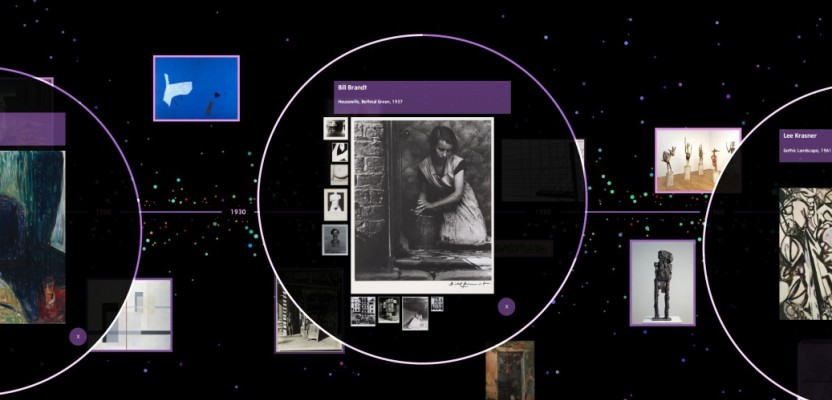Museums around the world welcome millions of visitors each year, accounting for a $192 billion dollar industry in the U.S. alone. But with the Millennial generation already surpassing Baby Boomers by the millions, and Gen-Z projected to make up 25% of the U.S. population by 2020, museums are facing a huge challenge in figuring out how to lure these audiences through their doors in a way that is both authentic and exciting. For many curators, this means integrating technology into their exhibits – with this comes the concern that a new approach will dilute or take away from the original splendor of the art itself. Curators, however, should be less apprehensive. On the contrary, integrating technology in the right way can—and should—enhance the consumption of art, even becoming an art form in and of itself.
Young generations have demonstrated an active curiosity in the arts.
While enticing newer generations to come visit museums is important, playing into their tech-savvy behaviors alone isn’t enough to make the case for investment. These key demographics are more likely than any before them to discover art online and through social media, yet still make visits to exhibitions (and likely document those visits online, on their own social channels). But it’s extremely important to note that they also have a keen interest and fascination for art itself. They view art as a fixed asset, and are fast becoming collectors and traders, with modern auction houses such as Paddle8 accommodating their sales. They’re hungry for information, novelty and prestige in their dealings with the art world.
Galleries like Pace, whose 2016 Menlo Park Art + Technology space launched with an exhibition by teamLab, have already embraced this audience. teamLab, a company whose work in the art space are multi-channel, immersive orchestrations of technology, give younger generations the experience of being a part of the artwork in a way that is authentic to the institution’s expectations of the art’s potential to engage.

Curators must avoid static applications of technology
While there are curators already moving to bring tech into their institutions, some of their investments have backfired. For example, as a recent Wall Street Journal article reported, museums that invested in QR codes (the black-and-white scan images that give visitors more information about an item or object through a device), have found that this technology has quickly dated, and ultimately did not add value to the experience of consuming the art itself. This alone is enough to get under the skin of any museum curator, and increase apprehension around tech adoption. Curators must find a way to integrate technology that, like the work of teamLab, disrupts the art world itself, in turn courting visitors to engage in an active, rather than passive, experience.

Applied properly, technology should reinvent how we consume art
Framestore Labs, the company for which I work, recently developed two spaces for the Tate Modern’s new Switch House. The two interactive “Explore” spaces, part of the ongoing Bloomberg Connects digital program, allow museum visitors to experience Tate’s archive material in unexpected ways. These installations — carefully developed combinations of visual, audio and spatial elements — bring Tate’s collection to life to both the contextually curious, as well as digitally native (read: Millennials and Gen-Z) audiences. Visitors are able to become a part of the art itself – quite literally, in the ‘Explore Performance’ space, in which the motion of human bodies around the room drives the content displayed on the gallery walls.
The Met’s “Color the Temple” is another example of museums using technology thoughtfully and to great impact. In this initiative, The Met’s MediaLab used projection mapping to fill the temple’s carvings with the vibrant colors believed to have been used on the original structure, before it became worn with time. Museum-goers get an experience that’s not only Instagrammable but also completely engaging; beautiful in and of itself; and informative in a way that viewers can truly comprehend, sharing in the splendor of the temple as it was experienced by ancient Egyptians.
It’s clear that integrating technology with art is so much more than putting an iPad or headset into an exhibit and hoping it will draw in droves of visitors. Instead, when done right, technology has the power to transport a visitor deep into the world of the art they are viewing, to shape their experience of the work and, on a wider scale, change the consumption of culture. Said change, of course, is only visible to those of us who knew the ‘before.’ With generations of consumers like Millennials and Gen-Z coming of age in an era of ever-evolving tech and art, there is no watershed moment – there is simply the now. Institutions must be confident in adopting, and adapting to, the behaviors, tastes and purchasing habits of this powerful young wave of consumers; they won’t stop moving, and neither should we.






